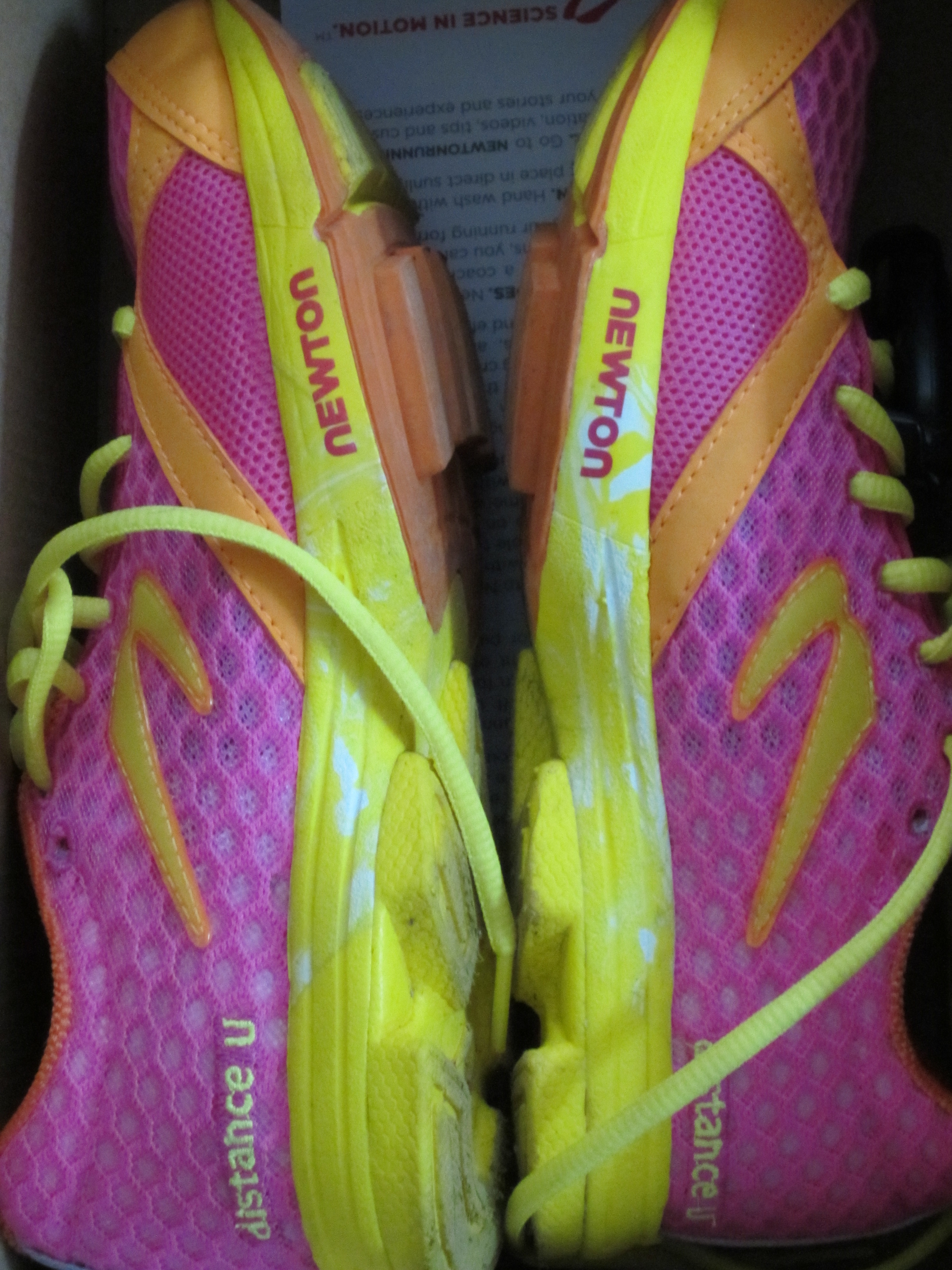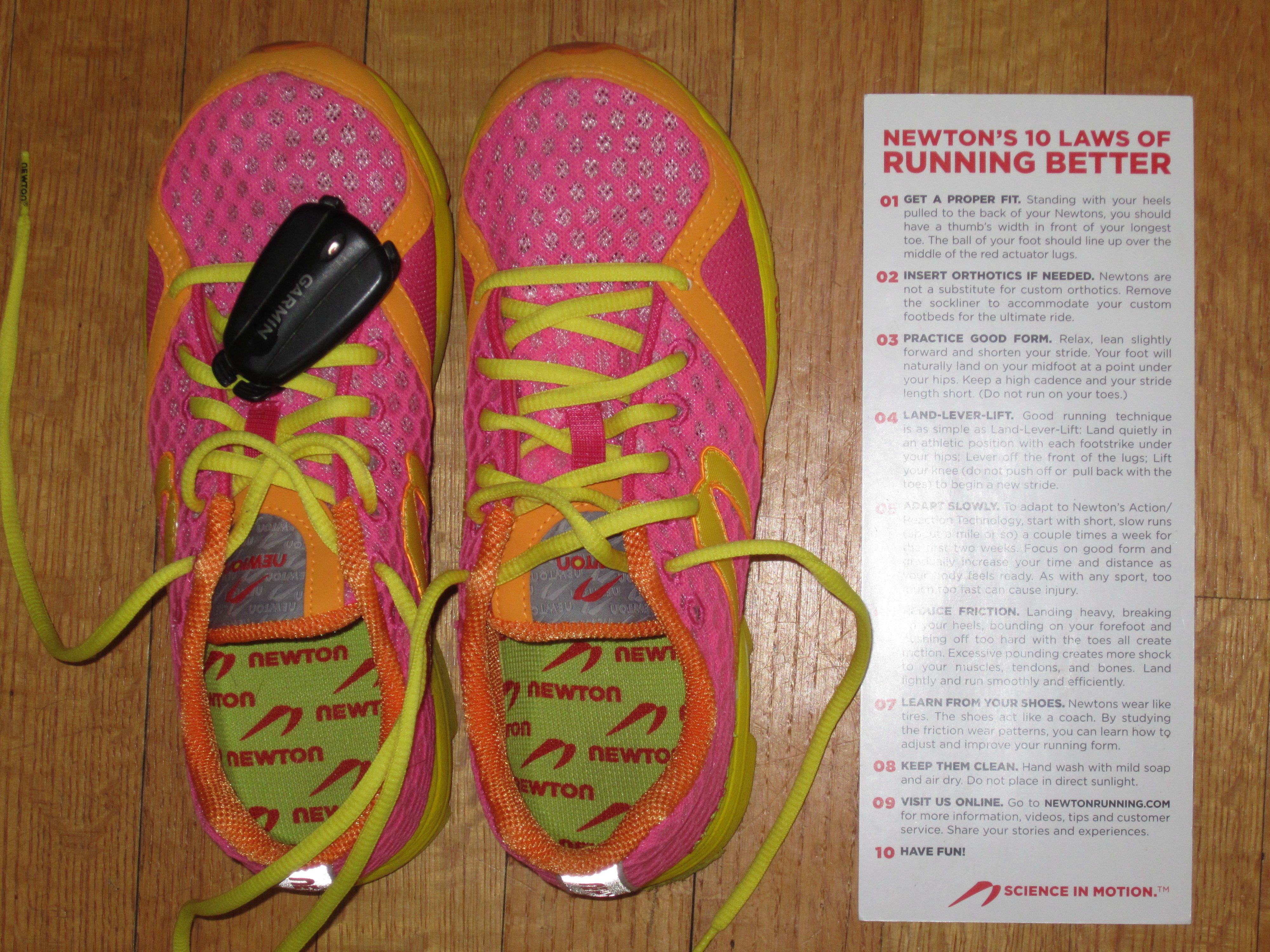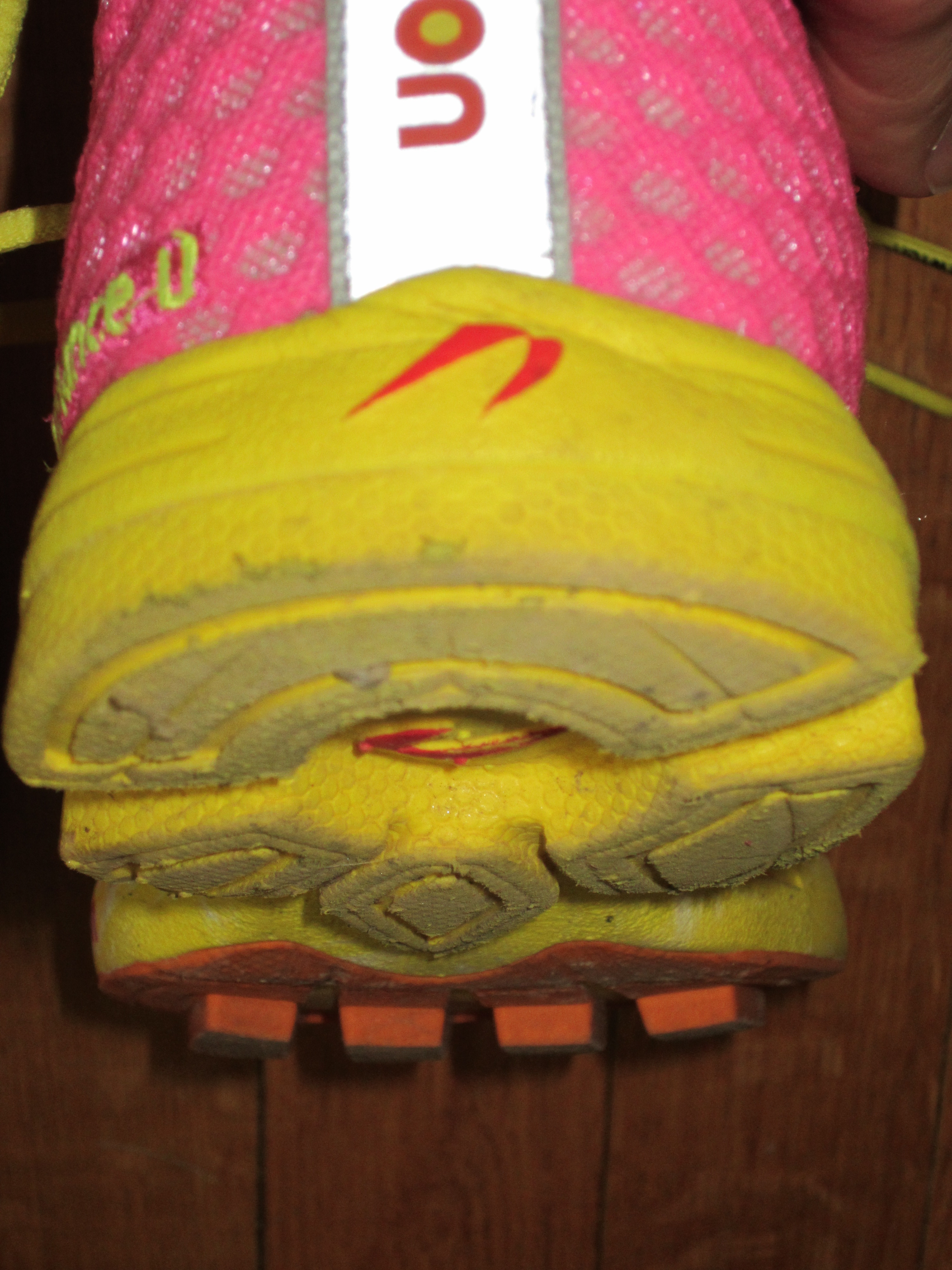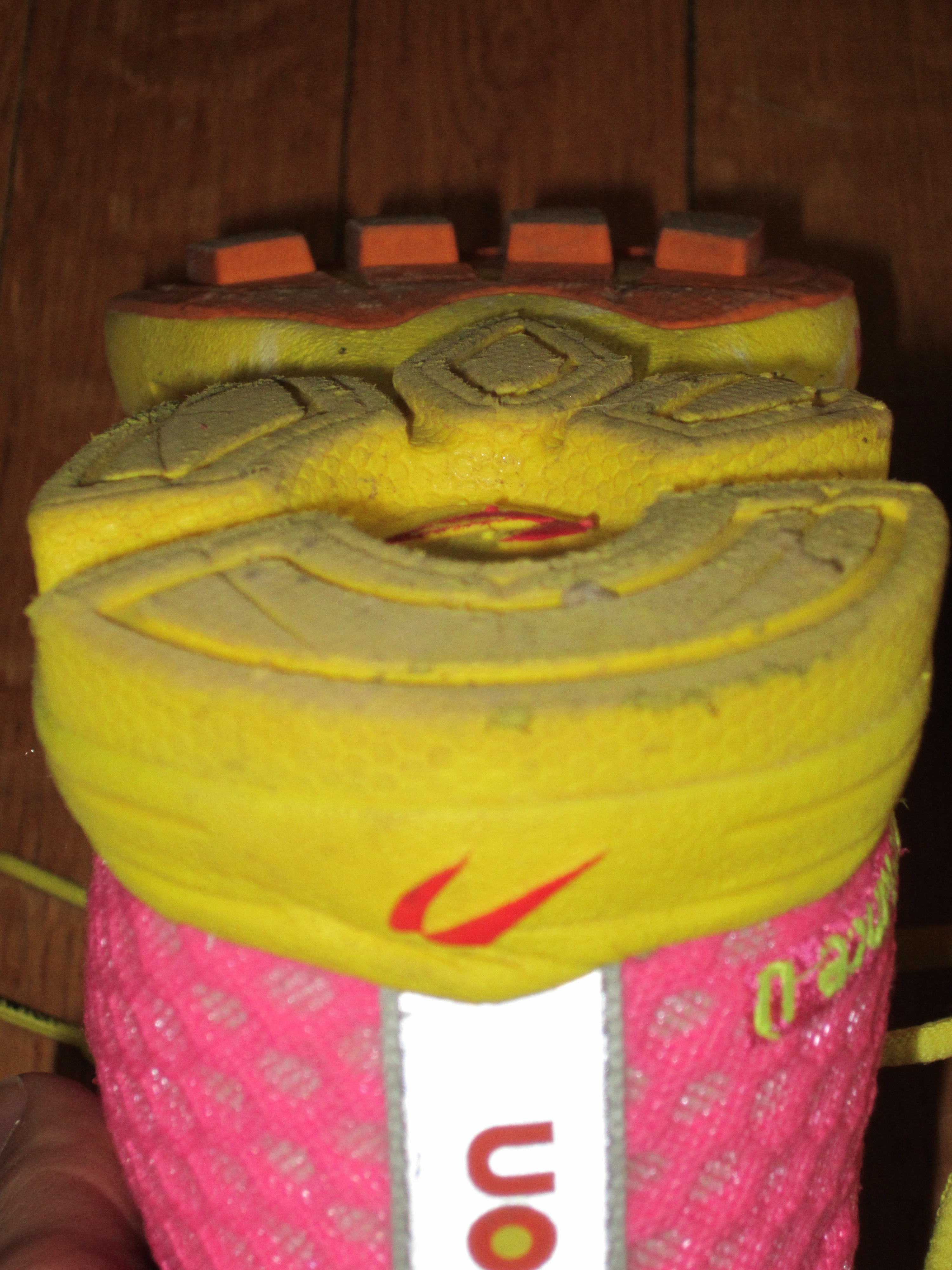So as you may know, I have been running in my Newtons for a month now, but today was my fourth time in a row running in them, while it was Lina’s first time running in hers. I am running in the Distance U and Lina is running in the Motion. There is not much difference between the shoes, except the Distance U is a little bit lighter and has less cushioning and support in the heel. I am a neutral runner with a slight¬†overpronation¬†in my right foot. Lina is a heel-striker who overpronates.
I am really trying to focus on proper running form, natural running. So far my stride has not transformed 100 percent, since running in the Newtons, but I have become more aware of my stride and what I need to do to change it. The one thing that I have noticed and love about running in the Newtons is how much I can feel the ground. Feeling the ground also makes me more aware of how my foot moves and how it strikes the ground while running. ¬†Here are pics from today’s Daily Work Out.
LINA: has had stress fractures in both lower legs. The shoes she has run in previously have not helped her stay injury free. Hopefully, she can changer her stride by wearing the Newton shoes.
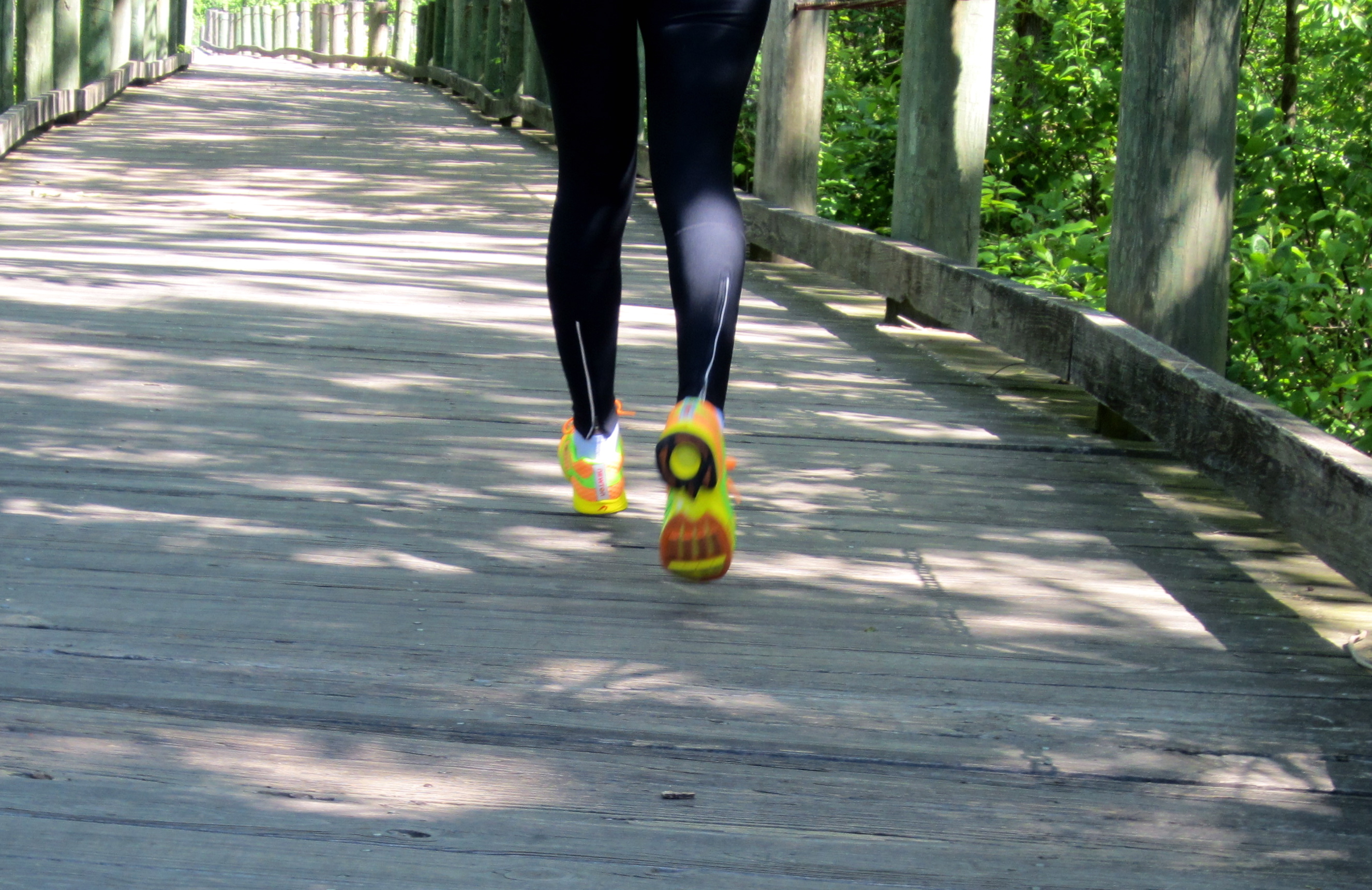 Lina running in her Newton Motion shoes. Although, she is still heel-striking, she is confident that with time her stride will improve. She also loves the lightweight feel of the shoe.
Lina running in her Newton Motion shoes. Although, she is still heel-striking, she is confident that with time her stride will improve. She also loves the lightweight feel of the shoe. Lina again running in her Newton Motion Shoes. As you can see the shape of her elevated leg, shows she is over-pronating. Again, this is Lina’s first 3 mile run in her Newton shoe. Hopefully, with time her stride will improve.
Lina again running in her Newton Motion Shoes. As you can see the shape of her elevated leg, shows she is over-pronating. Again, this is Lina’s first 3 mile run in her Newton shoe. Hopefully, with time her stride will improve.
MEG: I have never had any injuries, only a blister here and there. I have always run in Asics Nimbus  in a size 6.5 and just recently the Brooks Glycerin in a size 7.0. Both are good running shoes. But after reading Born to Run, I have always been interested in the idea of Natural Running. I am hoping the Newton shoes will help improve my stride and make me faster. 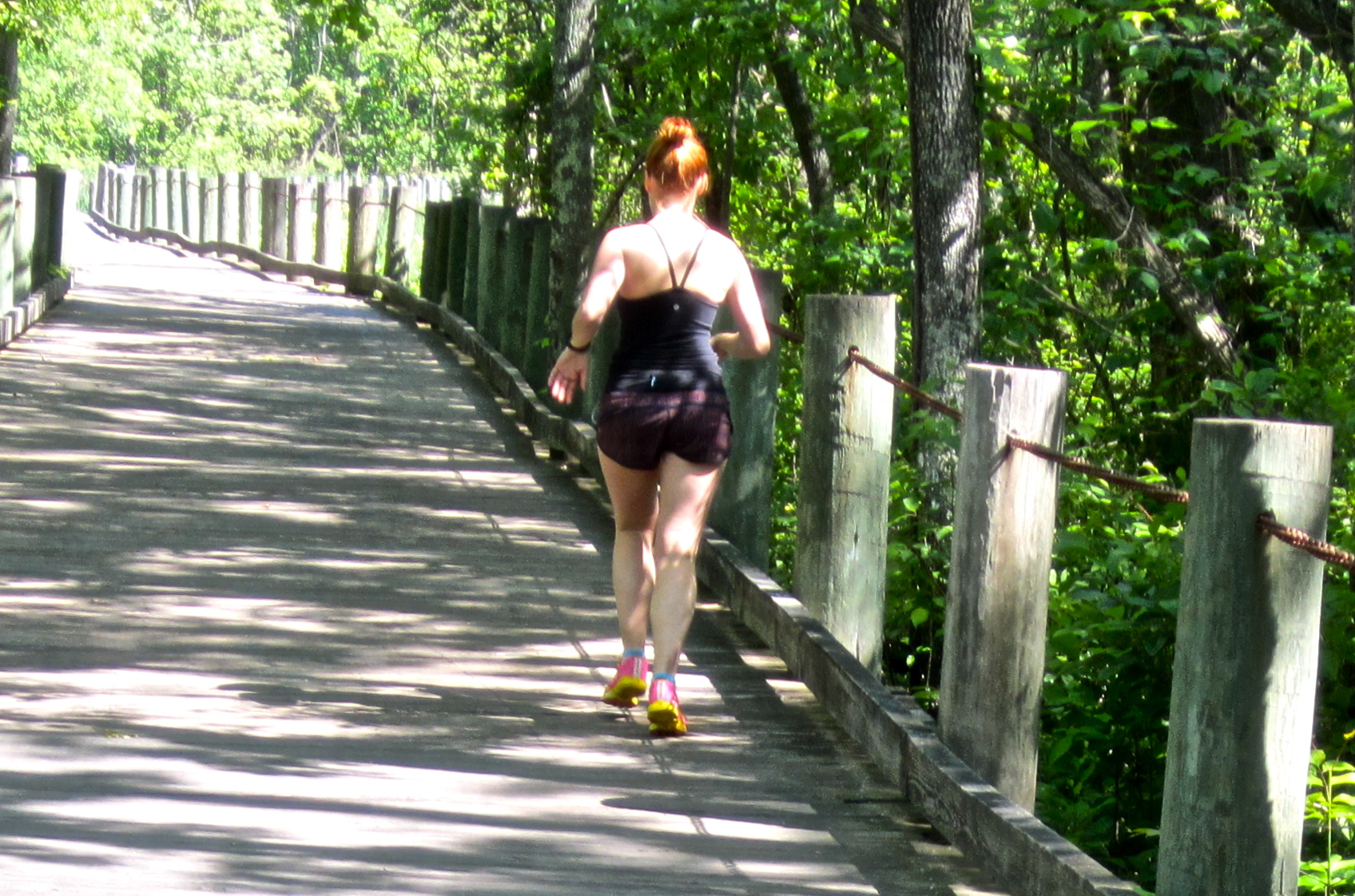 There I am running in my Newton Distance U shoes. I am not heel-striking but rather running by landing on my forefoot/midfoot, the key to Natural Running. Also notice legs and ankles fall right under hips.
There I am running in my Newton Distance U shoes. I am not heel-striking but rather running by landing on my forefoot/midfoot, the key to Natural Running. Also notice legs and ankles fall right under hips.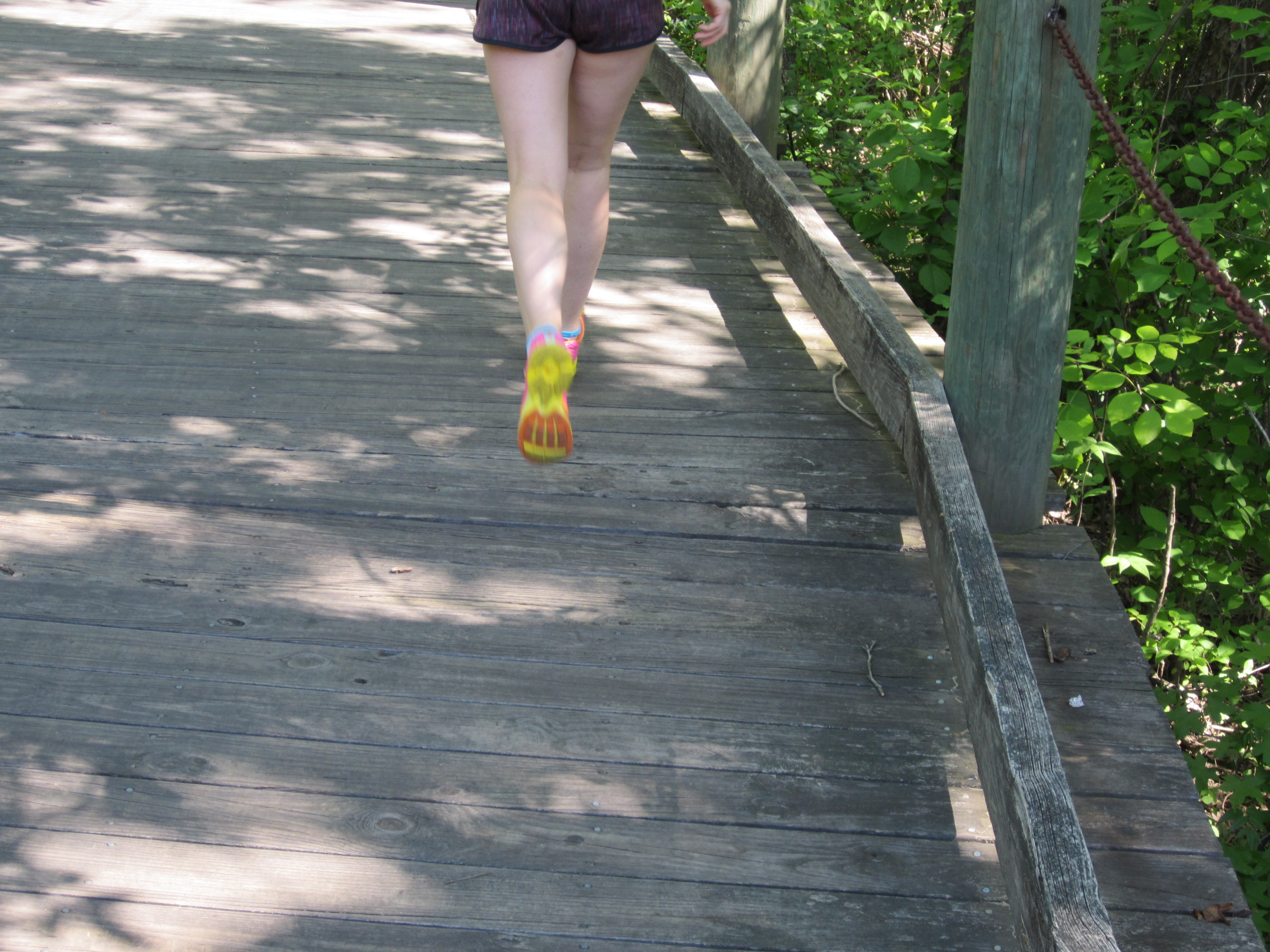
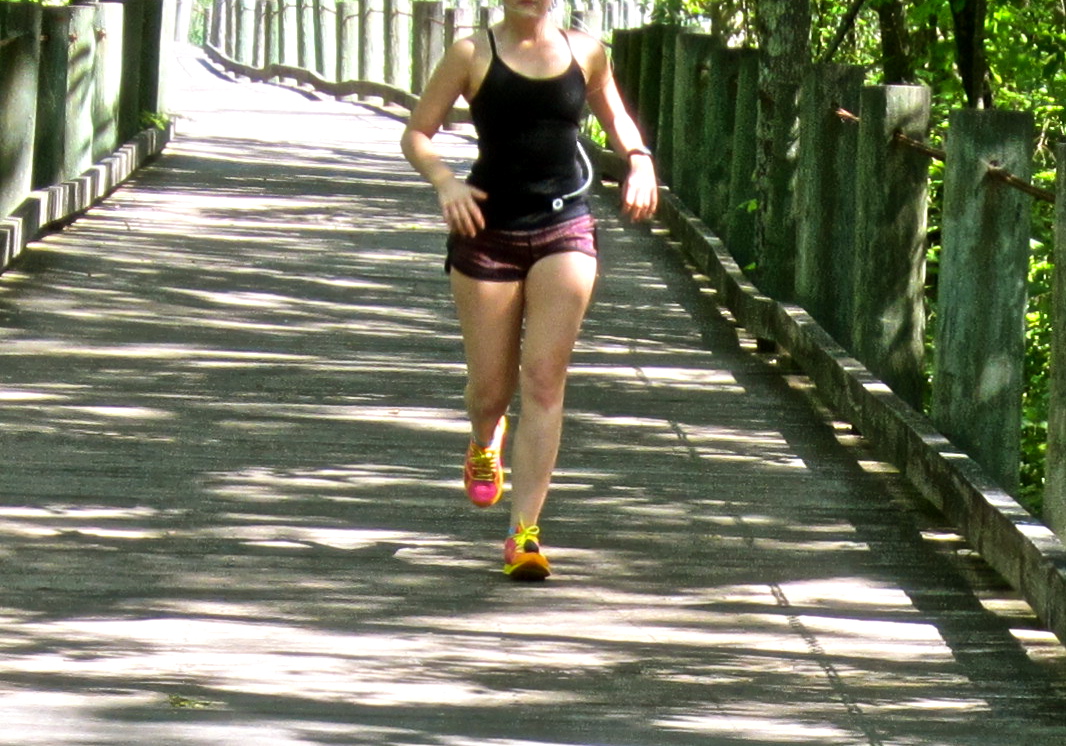 Again running on my forefoot/midfoot. Also notice legs and ankles in line, right under hips. Key to Natural Running.
Again running on my forefoot/midfoot. Also notice legs and ankles in line, right under hips. Key to Natural Running. Again forefoot/midfoot striking, and legs landing right under hips. Demonstrating Natural Running.
Again forefoot/midfoot striking, and legs landing right under hips. Demonstrating Natural Running.
I have always been a neutral runner, so I am having a little more success in the Newton shoes and in transitioning to a Natural Runner, than Lina is. However, I have also been running in these shoes for a full month longer than Lina. Today was her first day wearing them.  I still am not perfect and still heel-strike a little sometimes and slightly over-pronate with my right foot. Another awesome way to judge is to look at the bottom of the shoes. You can see more wear and tear on my right shoe.







